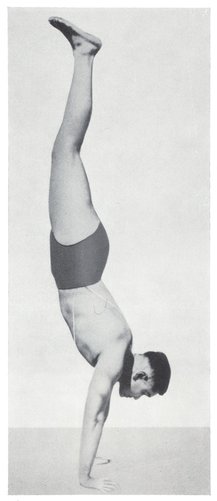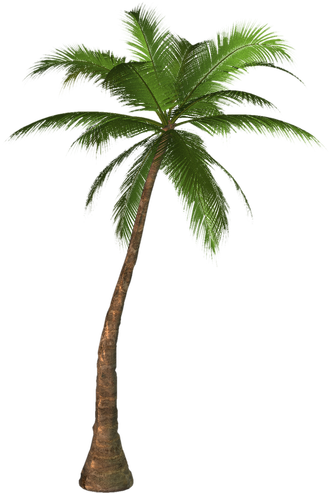|
Once we have mastered Handstand, we relax our neck so that, instead of being lifted, our head dangles straight down. This requires more body awareness and subtle balance control. It is called Palm Tree.
I have always been been under the impression (and I hope I'm not alone) that the posture was named after the tropical tree with broad leaves. I couldn't tell you what one had to do with the other, but that is not uncommon in the sometimes strange world of yoga posture names. Recently it came to to my attention that this posture is not named after the tropical tree at all. (Thanks Jeff Chen!) We were reading through Gouri Shankar Mukerji's upcoming book of 84 asanas. He labels Handstand with two names: Hastasana and Hasta Brikshasana. Both describe the same position of balancing the body on the hands. "Hasta means hand or arm and Briksha the tree. The name of this asana explains all, because the arms and hands support the outstretched body like a tree. Here the exercise is called Hastasana or Handstand." The body is straight and extended like a tree, supported on the arms, hands or palms. So we could call it "Arm Tree", "Hand Tree" or "Palm Tree". The name Palm Tree, therefore, has nothing to do with the tropical plant.
0 Comments
Leave a Reply. |
AUTHORSScott & Ida are Yoga Acharyas (Masters of Yoga). They are scholars as well as practitioners of yogic postures, breath control and meditation. They are the head teachers of Ghosh Yoga.
POPULAR- The 113 Postures of Ghosh Yoga
- Make the Hamstrings Strong, Not Long - Understanding Chair Posture - Lock the Knee History - It Doesn't Matter If Your Head Is On Your Knee - Bow Pose (Dhanurasana) - 5 Reasons To Backbend - Origins of Standing Bow - The Traditional Yoga In Bikram's Class - What About the Women?! - Through Bishnu's Eyes - Why Teaching Is Not a Personal Practice Categories
All
Archives
May 2024
|








 RSS Feed
RSS Feed